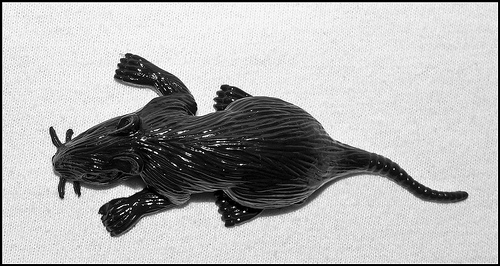There are 180 million Norway and black rats on the fabled Galapagos Islands, and they need to go.
“(Rats) reproduce every three months and eat everything,” Juan Carlos Gonzalez, who works for the Nature Conservancy, told the Associated Press. “This is a very expensive but totally necessary war.”
The rats first came to the islands in the 1600s, aboard ships from far away, and on a steady diet of eggs and baby tortoises, lizards, snakes, and now-endangered bird species, they multiplied. It’s going to take $1.8 million to get rid of them, not to mention tons of little poison cubes, measuring about two-fifths of an inch on any side.
The poison’s “specially designed” to kill only rats, and to keep a holocaust of rat corpses from piling up on the islands — an anti-coagulant ensures that the dead rats will dry up and waste into nothingness within days. Still, hawks and iguanas, which would eat the rats if given a chance (whether out of hunger or revenge, we can’t say), are being gathered up and kept away from the dead-rat feast.
The goal of all this is to keep the island’s biodiversity intact — a noble goal that rat society clearly does not truck with. Apparently, sometimes you really have to poison 180 million animals in order to save the wildlife.



